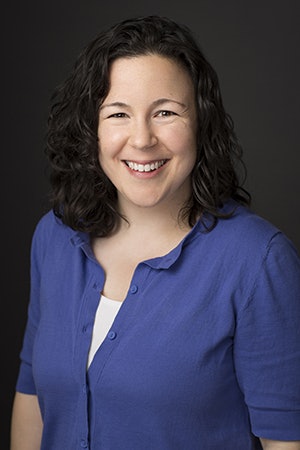A new Foundation for Individual Rights in Education (FIRE) report on the climate of free speech on college and university campuses reveals that despite 10 years of free speech victories in higher education, a majority of American institutions still restrict protected speech to a certain degree.
 Samantha Harris
Samantha HarrisOn Tuesday, the “Spotlight on Speech Codes 2018: The State of Free Speech on Our Nation’s Campuses” report indicated that out of the 461 largest and most prestigious American colleges and universities surveyed, 32.3 percent of institutions received FIRE’s lowest “red light” rating for maintaining severe speech codes that “clearly and substantially” restrict freedom of speech. The majority of the schools – 58.6 percent – received a “yellow light” rating; only 37 institutions received the highest “green light” rating; and seven schools did not receive ratings, the organization reports.
“Most speech is protected by the First Amendment,” said Samantha Harris, vice president of policy research at FIRE, in an email statement. “The Supreme Court has outlined narrow exceptions to that protection – for things like true threats, harassment, incitement to violence, etc. – and has laid out clear definitions for those categories. To fully protect students’ and faculty members’ free speech rights, universities should not prohibit speech that is protected by the First Amendment.”
FIRE—a nonpartisan, nonprofit organization—is dedicated to defending liberty, freedom of speech, due process, academic freedom, legal equality and “freedom of conscience” on America’s college campuses, according to its website. Their report serves to inform policy discussions with data and analysis, and it comes as Congress deliberates on adding speech code reporting requirements to the reauthorization of the Higher Education Act.
Signifying a trend of schools moving to increasingly protect students’ First Amendment rights, this year the number of schools with “red light” ratings is seven percentage points lower than last year’s and nearly 42 points lower than FIRE’s 2009 report.
FIRE designates a “red,” “yellow” or “green” light rating to institutions depending on written institutional policies related to free or protected speech. “Red light” ratings are given to schools whose policy“unambiguously infringes on what is or should be protected expression” at face value regardless of how the policy is applied. “Yellow light” ratings are given to schools whose policies “restrict a more limited amount of protected expression or, by virtue of their vague wording, could too easily be used to restrict protected expression,” FIRE’s report said.
A “green light” rating is given to schools whose policies do not “seriously imperil” speech, but FIRE says it could also mean that the organization is currently not aware of any threats to students’ First Amendment rights at the campus.
The Speech Code Rating System holds public and most private institutions to the same standards. Since public institutions are legally required to protect students’ First Amendment rights, FIRE’s report says any “red” or “yellow” light rating for speech codes at these schools are “unacceptable.”
And when a private institution’s speech codes violate any institutional promise to uphold First Amendment rights to debate and freedom, the institution may be morally compromised. Still, FIRE will issue a warning to prospective students and faculty.
Other report findings indicate that roughly one in ten schools maintain a “free speech zone” where students can demonstrate and participate in “expressive activities” in a designated or “out-of-the-way” area on campus. Additionally, 30 percent of surveyed institutions – and more than half of private institutions surveyed – had a bias response team that identifies “bias” or “hate speech” based on anonymous student reports.
While there has been progress fighting to uphold First Amendment rights in order to create a culture of open debate, Harris says there is still work to be done. So far, FIRE notes that 27 schools, or their faculty bodies, have adopted their own statements in support of free speech modeled after a 2015 statement by the University of Chicago’s Committee on Freedom of Expression.
Harris adds that a goal for the report and FIRE’s searchable Spotlight Database is to provide prospective students and faculty with detailed information on the state of their rights at various schools in order for them to make informed decisions.
“Just as a prospective student might consider things like faculty/student ratio, etc., when thinking about where to go to school, we think people considering attending or working at a university should also consider the extent to which they will have the right to free speech there,” she said.
Tiffany Pennamon can be reached at [email protected]. You can follow her on Twitter @tiffanypennamon.





















